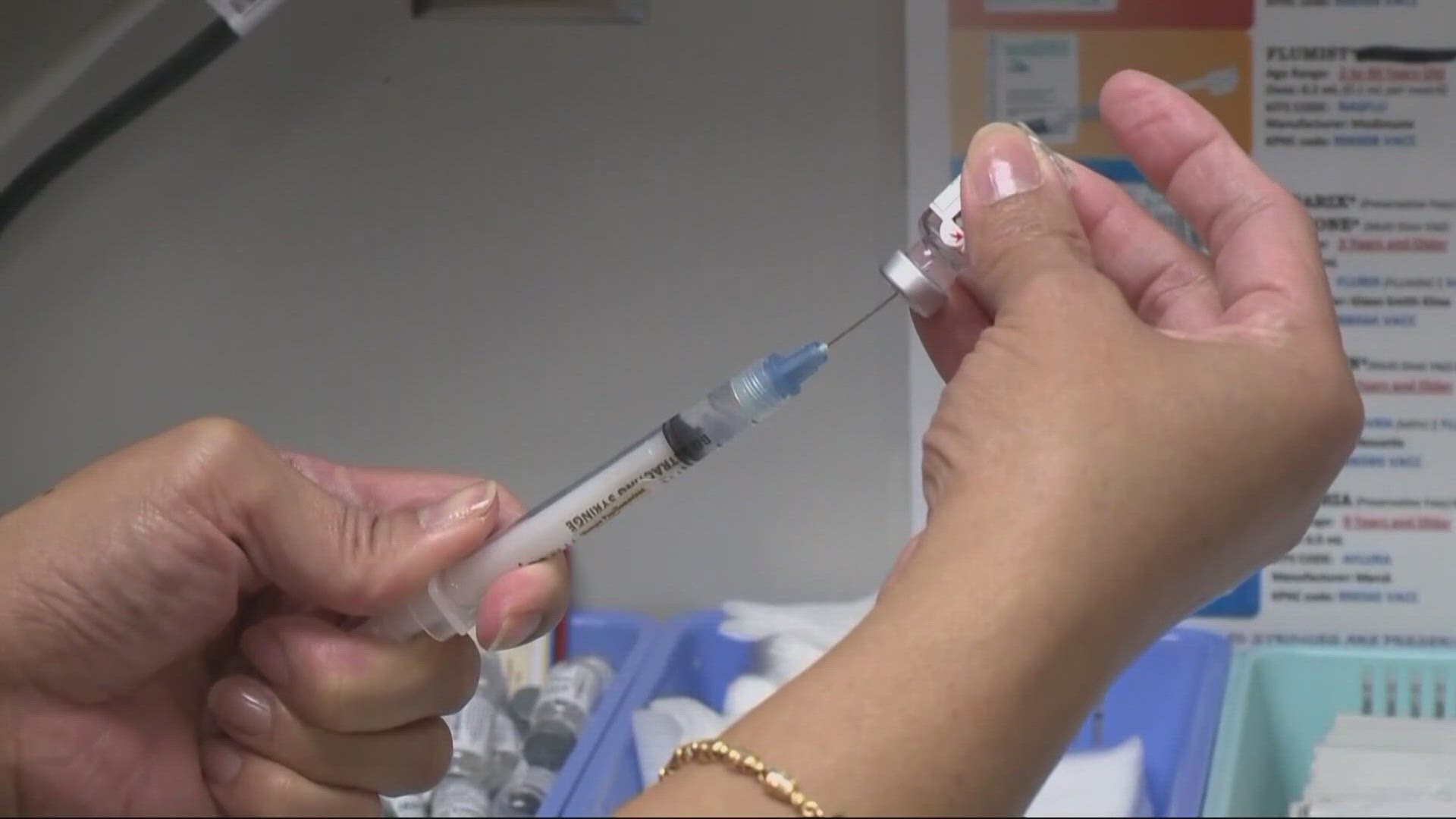PORTLAND, Ore. — Oregon Gov. Kate Brown on Tuesday announced updates to each county's COVID-19 risk level, which dictates what restrictions will be in place at the start of the new year.
Starting Friday, Jan. 1, there will be 23 counties in the extreme risk level, six counties in the high risk level, zero at moderate risk and seven at lower risk.
Six counties (Baker, Clatsop, Coos, Douglas, Lincoln, Morrow) have been moved from the Extreme Risk category to the High Risk category. Lake County was also moved from Moderate Risk to Lower Risk.
"After weeks of diligent work by local leaders and public health officials to implement health and safety measures in their communities, this week's county data is a welcome sign that we are making progress in stopping the spread of COVID-19 in Oregon," Brown said.
After announcing Tuesday that five counties had improved from extreme risk to high risk, Brown on Wednesday said Baker County had also been added to that list.
The governor said that when state health officials were calculating Baker County's risk level, they included nine cases from adults in custody at Powder River Correctional Facility in Baker City. Brown said those individuals shouldn't have been included in the risk level metrics for the county because adults in custody don't interact with members of the public.
Here's the full list of county risk levels.
Extreme Risk (23 counties)
- Benton
- Clackamas
- Columbia
- Crook
- Curry
- Deschutes
- Hood River
- Jackson
- Jefferson
- Josephine
- Klamath
- Lane
- Linn
- Malheur
- Marion
- Multnomah
- Polk
- Tillamook
- Umatilla
- Union
- Wasco
- Washington
- Yamhill
High Risk (6 counties)
- Baker
- Clatsop
- Coos
- Douglas
- Lincoln
- Morrow
Moderate Risk (0 counties)
- No counties
Lower Risk (7 counties)
- Gilliam
- Grant
- Harney
- Lake
- Sherman
- Wallowa
- Wheeler
Counties will remain at these risk levels from Jan. 1 to Jan. 14. The Oregon Health Authority will reassign county risk levels every two weeks based on the most recent coronavirus data available.
Here's a look at which metrics determine the risk level for each county:
In counties with extreme risk, the following activities will be allowed, with health and safety protocols in place:
- Social and at-home gatherings with people from outside your household will be limited to a maximum of six people, with a recommended limit of two households.
- Restaurants, bars and other eating and drinking establishments will be limited to a maximum of 50 people for outdoor dining only, with only six people per table. Take-out is strongly encouraged.
- Indoor recreation, fitness and entertainment establishments, including gyms, will remain closed, however, outdoor recreation, fitness and entertainment activities, including outdoor gym activities, will be allowed, with a maximum limit of 50 people outdoors.
- Retail stores, grocery stores, pharmacies and indoor and outdoor shopping centers and malls will be limited to a maximum of 50% of capacity, with curbside pick-up encouraged.
- Faith institutions, funeral homes, mortuaries and cemeteries will be limited to a maximum of 25% of capacity or 100 people indoors (whichever is smaller), or 150 people outdoors.
- Office workplaces will be required to utilize remote work to the maximum extent possible, with public-facing offices closed to the public.
- Personal services businesses will be allowed to continue to operate with health and safety measures in place.
- Long-term care facilities can allow limited outdoor visitation, following established health and safety protocols.
High Risk is the first level in which some businesses and facilities can resume offering indoor services with health and safety measures and capacity limits in place. Here's a look at what activities will be offered under each risk category:



